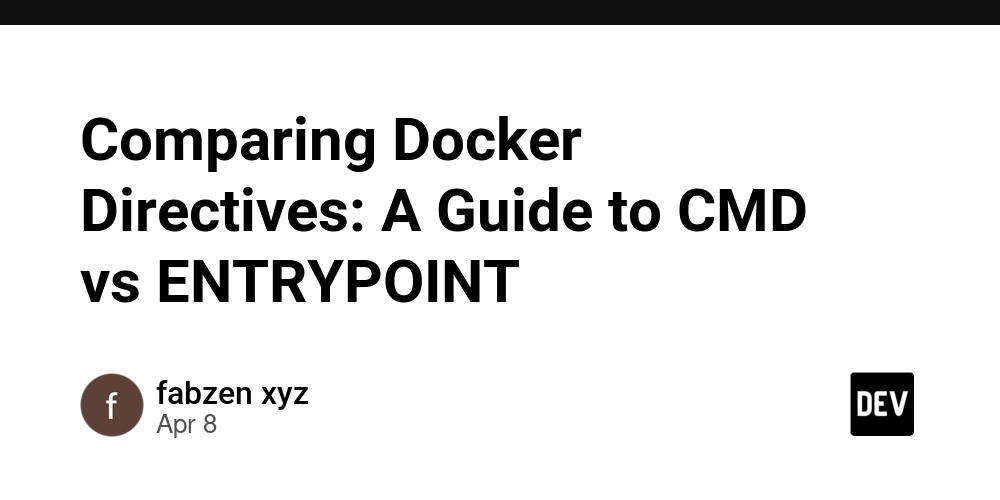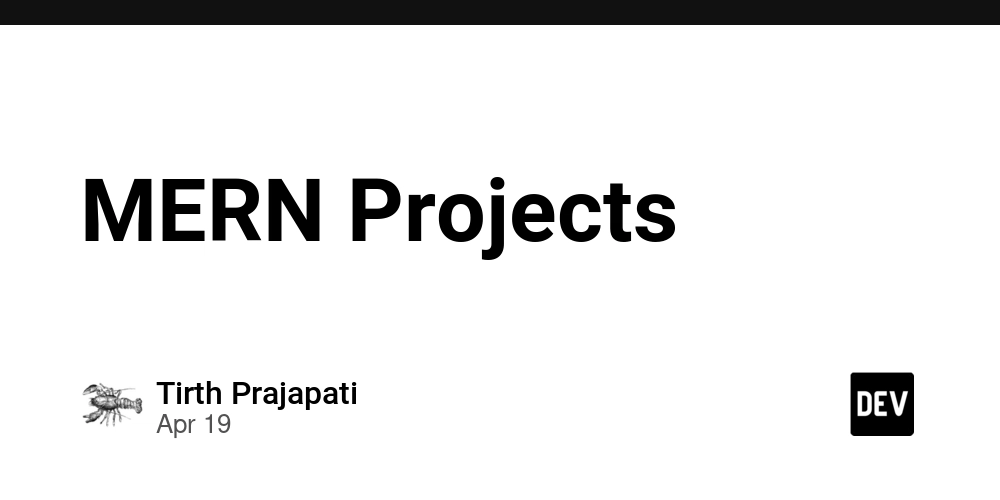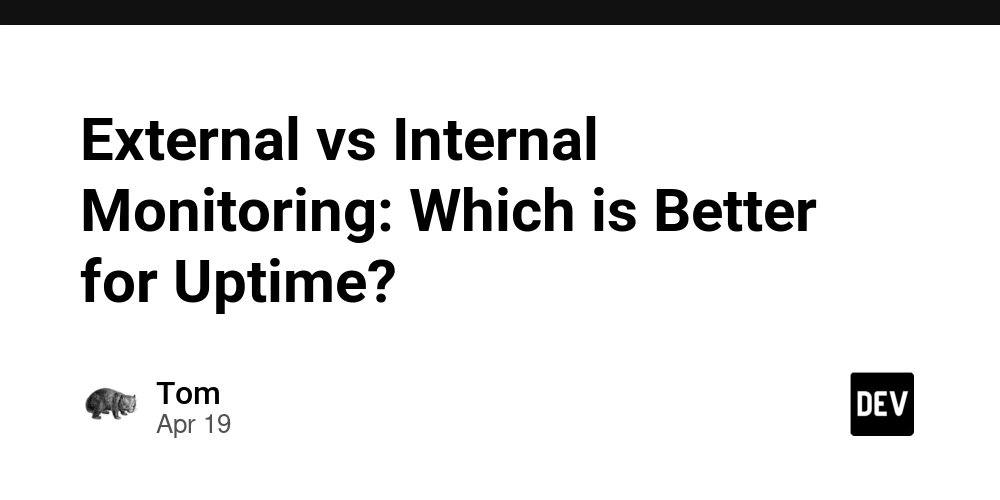Comparing Docker Directives: A Guide to CMD vs ENTRYPOINT
Introduction: In the world of Docker, CMD and ENTRYPOINT are two essential directives that play crucial roles in defining how a container behaves when it's run. While they may seem similar at first glance, they serve distinct purposes and understanding their differences is key to effectively configuring Docker containers. This guide aims to provide a comprehensive comparison of CMD and ENTRYPOINT, exploring their functionalities, use cases, and ecs best practices. Understanding CMD and ENTRYPOINT: CMD Directive: CMD is used to specify the default command that will be executed when a container is launched. It can be overridden at runtime by providing command-line arguments when running the container. If the Dockerfile contains multiple CMD instructions, only the last one will take effect. CMD is typically used to define the primary executable or process that the container should run. ENTRYPOINT Directive: ENTRYPOINT specifies the executable or script that will be run when the container starts. Unlike CMD, the ENTRYPOINT directive cannot be overridden at runtime. However, arguments provided at runtime will be passed as arguments to the ENTRYPOINT command. ENTRYPOINT is often used to define the main process or application that the container encapsulates. Comparing Use Cases: CMD is suitable for defining the default behavior of a container, such as starting a web server or running a specific script. ENTRYPOINT is preferred when you want to enforce a specific command or executable to run within the container, ensuring consistency across different environments. Best Practices: Combining CMD and ENTRYPOINT: It's common to use both docker cmd vs entrypoint in a Dockerfile to achieve flexibility and maintainability. CMD can be used to specify default arguments or parameters for the ENTRYPOINT command, allowing users to override them at runtime. Choosing Between CMD and ENTRYPOINT: Consider the intended behavior of your container and whether you need the flexibility to override the command at runtime. Use CMD for defining default behaviors that users may want to customize, and use ENTRYPOINT for enforcing specific commands or processes. Real-World Examples: CMD Example: CMD ["npm", "start"] This Dockerfile instruction specifies that the container should run the "npm start" command by default, which typically starts a Node.js application. ENTRYPOINT Example: ENTRYPOINT ["python", "app.py"] Here, the container is configured to execute the "python app.py" command upon startup, running a Python application named app.py. Conclusion: In conclusion, understanding the differences between CMD and ENTRYPOINT is essential for effectively configuring Docker containers. While CMD defines the default command that a container will run, ENTRYPOINT enforces a specific executable or script to be executed. By leveraging these directives appropriately and considering the use case and requirements of your application, you can create fortify docker image that are flexible, maintainable, and tailored to your needs.

Introduction:
In the world of Docker, CMD and ENTRYPOINT are two essential directives that play crucial roles in defining how a container behaves when it's run. While they may seem similar at first glance, they serve distinct purposes and understanding their differences is key to effectively configuring Docker containers. This guide aims to provide a comprehensive comparison of CMD and ENTRYPOINT, exploring their functionalities, use cases, and ecs best practices.
Understanding CMD and ENTRYPOINT:
CMD Directive:
CMD is used to specify the default command that will be executed when a container is launched.
It can be overridden at runtime by providing command-line arguments when running the container.
If the Dockerfile contains multiple CMD instructions, only the last one will take effect.
CMD is typically used to define the primary executable or process that the container should run.
ENTRYPOINT Directive:
ENTRYPOINT specifies the executable or script that will be run when the container starts.
Unlike CMD, the ENTRYPOINT directive cannot be overridden at runtime.
However, arguments provided at runtime will be passed as arguments to the ENTRYPOINT command.
ENTRYPOINT is often used to define the main process or application that the container encapsulates.
Comparing Use Cases:
CMD is suitable for defining the default behavior of a container, such as starting a web server or running a specific script.
ENTRYPOINT is preferred when you want to enforce a specific command or executable to run within the container, ensuring consistency across different environments.
Best Practices:
Combining CMD and ENTRYPOINT:
It's common to use both docker cmd vs entrypoint in a Dockerfile to achieve flexibility and maintainability.
CMD can be used to specify default arguments or parameters for the ENTRYPOINT command, allowing users to override them at runtime.
Choosing Between CMD and ENTRYPOINT:
Consider the intended behavior of your container and whether you need the flexibility to override the command at runtime.
Use CMD for defining default behaviors that users may want to customize, and use ENTRYPOINT for enforcing specific commands or processes.
Real-World Examples:
CMD Example:
CMD ["npm", "start"]
This Dockerfile instruction specifies that the container should run the "npm start" command by default, which typically starts a Node.js application.
ENTRYPOINT Example:
ENTRYPOINT ["python", "app.py"]
Here, the container is configured to execute the "python app.py" command upon startup, running a Python application named app.py.
Conclusion:
In conclusion, understanding the differences between CMD and ENTRYPOINT is essential for effectively configuring Docker containers. While CMD defines the default command that a container will run, ENTRYPOINT enforces a specific executable or script to be executed. By leveraging these directives appropriately and considering the use case and requirements of your application, you can create fortify docker image that are flexible, maintainable, and tailored to your needs.


.jpg)

























![[Webinar] AI Is Already Inside Your SaaS Stack — Learn How to Prevent the Next Silent Breach](https://blogger.googleusercontent.com/img/b/R29vZ2xl/AVvXsEiOWn65wd33dg2uO99NrtKbpYLfcepwOLidQDMls0HXKlA91k6HURluRA4WXgJRAZldEe1VReMQZyyYt1PgnoAn5JPpILsWlXIzmrBSs_TBoyPwO7hZrWouBg2-O3mdeoeSGY-l9_bsZB7vbpKjTSvG93zNytjxgTaMPqo9iq9Z5pGa05CJOs9uXpwHFT4/s1600/ai-cyber.jpg?#)












































































































































![[The AI Show Episode 144]: ChatGPT’s New Memory, Shopify CEO’s Leaked “AI First” Memo, Google Cloud Next Releases, o3 and o4-mini Coming Soon & Llama 4’s Rocky Launch](https://www.marketingaiinstitute.com/hubfs/ep%20144%20cover.png)






































































































































































































![Rogue Company Elite tier list of best characters [April 2025]](https://media.pocketgamer.com/artwork/na-33136-1657102075/rogue-company-ios-android-tier-cover.jpg?#)







































































_Andreas_Prott_Alamy.jpg?width=1280&auto=webp&quality=80&disable=upscale#)






























































































![What’s new in Android’s April 2025 Google System Updates [U: 4/18]](https://i0.wp.com/9to5google.com/wp-content/uploads/sites/4/2025/01/google-play-services-3.jpg?resize=1200%2C628&quality=82&strip=all&ssl=1)










![Apple Watch Series 10 Back On Sale for $299! [Lowest Price Ever]](https://www.iclarified.com/images/news/96657/96657/96657-640.jpg)
![EU Postpones Apple App Store Fines Amid Tariff Negotiations [Report]](https://www.iclarified.com/images/news/97068/97068/97068-640.jpg)
![Apple Slips to Fifth in China's Smartphone Market with 9% Decline [Report]](https://www.iclarified.com/images/news/97065/97065/97065-640.jpg)































































































































